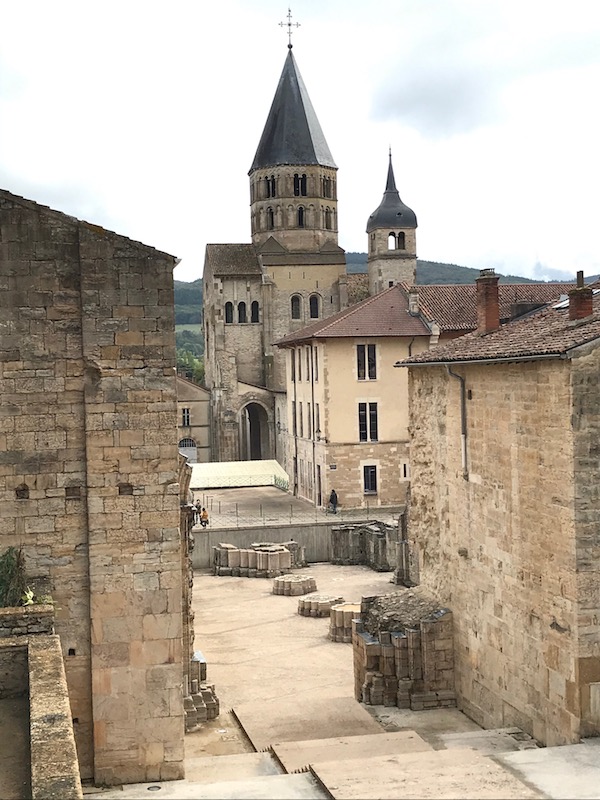Our Blog - Cluny, France
The town of Cluny was born due to the establishment of the world-famous Abbey of Cluny. In 910, 12 Benedictine monks from the Jura mountains settled in a rural estate here. From there, it grew to more than 10,000 monks at the peak in the 12th century. In 1088, the 3rd church (called Maior Ecclesia) was built, and it was the largest Romanesque church ever built. The town of Cluny developed next door, and it has the largest set of civil Romanesque structures in Europe north of the Alps. This includes several old parish churches and Romanesque houses that can be recognized by their large arcades.
Unfortunately, Lucy wasn't allowed within the walls of the Abbey complex, and so we remained outside, just walking through the town of Cluny itself.
Église Notre-Dame de Cluny is right in the middle of town, just around from Place de la Republique. It was built in the 13th century and you can see the flying buttresses, characteristic of Gothic architecture, which support the outer wall. The church is built on a very simple plan: a nave, long and narrow, with seven bays, made up of three arches on cross ribs. The large arches of the nave are surmounted by a gallery running in front of the windows on the upper floor.

The plan of this church from the end of the 12th century and the beginning of the 13th century remains Romanesque. The north aisle with a view of the elevation of the nave. This view makes it possible to understand what Gothic architecture is, which is not so characterized by the pointed arch, already existing in Romanesque art, however more open, but above all by the ribbed vault, composed two intersecting arches (ogives), transferring the weight to these four supports.


On the left, as you enter, is the 13th century baptismal fonts. It is made up of a cylindrical pillar confined by four column shafts, the capitals of which are formed of human heads.

At the entry on the other side is a statue of Blessed Anne-Marie Javouhey, founder of the Sisters of Saint-Joseph de Cluny. This community was created for the education of poor children and the first congregation of women missionaries. She is represented on a boat, because nuns from this community traveled to various islands (Reunion Island, Senegal, Martinique, and Guadeloupe. She is considered the apostle of blacks and the liberator of slaves, even though she was a supporter of progressive liberation rather than the abolition of slavery.

On the south altar is a polyptych of the Abbots of Cluny. While it looks old, it was actually created in 1983. It is an interesting trompe-l'oeil (the frames with the names are flat, not beveled like they look, giving the illusion of painted carpentry like altarpieces and triptychs from the Middle Ages.


Another icon, this one of Saint Benoit.

The 18th century stained-glass windows disappeared during a bombardment in 1944. The three modern stained-glass windows were made by the master glassmaker Pierre Choutet, including this one depicting the Virgin and Child. The majority of the other windows in the church were redone based on the original 18th century neo-Gothic stained glass windows.

There are lots of Middle-Age houses in the old town, including this one, the House of Dragons, just across the square from the church. It dates from the beginning of the 13th century (1215-1217) and, as with many houses on the square, is a combination of Gothic and Romanesque.
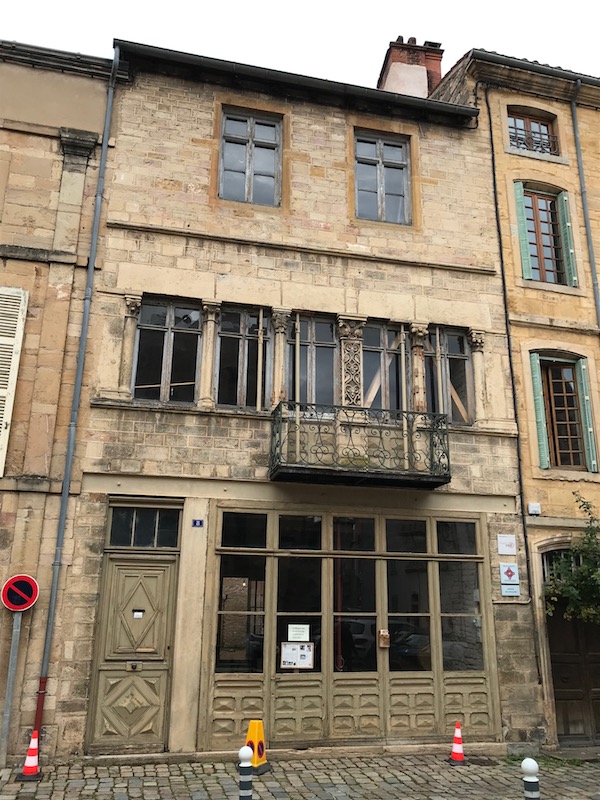
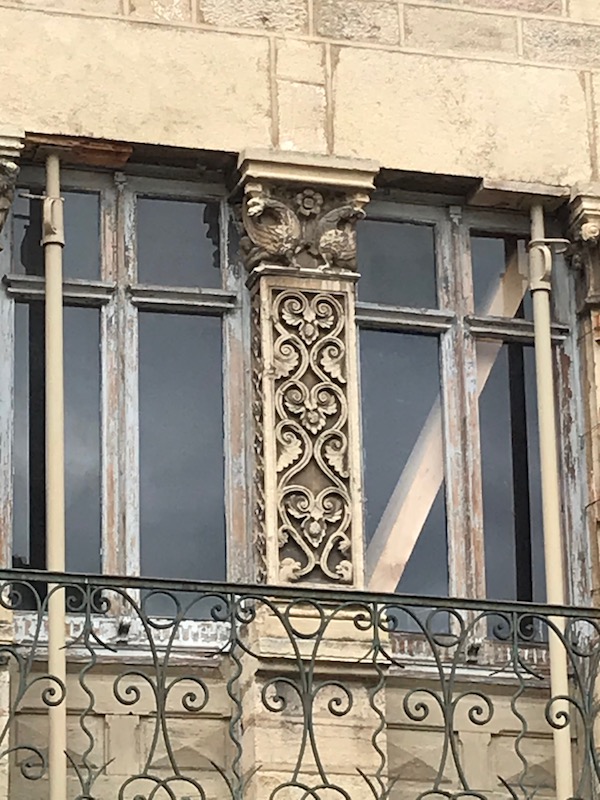
Another Romanesque house, this one has one of the nicest sets of windows on the upper floor.


The "Grape Harvest House" is at the corner of Rue du Merle and Rue Josephine Desbois, and it has some very interesting Trompe-l'œil decoration.

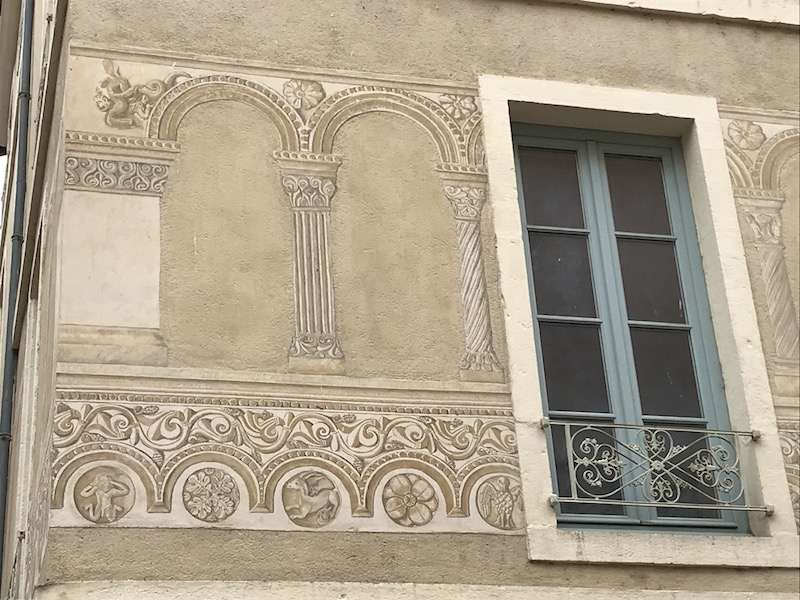
Two more examples of Romanesque/Gothic houses. Check out the Gothic arch on the ground floor, which would have been a store of some sort, and then the more Romanesque arches on the upper 2 floors.



This Romanesque house is known as that of the "fours banaux" or public bread ovens. It is atypical as it has a double façade and really no sculpted decoration. The ground floor has 2 matching arcades for shops. In between them, the chimney above juts out a little bit from the wall.

This is one of the 2 remaining city gates from the 12th century, this one being Porte Saint-Mayeul. It was actually walled-up by the inhabitants of the city and only re-opened around 1797.

The Tour Ronde (Round Tour) and the Tour Fabry are both parts of the old enclosure walls. The Round Tower is the older of the two, and you can see the marked difference in style. The Tour Fabry was built around the middle of the 14th century in Gothic style and is part of the enclosure of the Abbey itself.


Bishops house, 16th century palace Inside of the Abbey park, you can see the 16th century abbey palace. It represents the splendor of the abbots of the end of the Middle Ages. The Jacques d'Amboise Palace is a Renaissance monument, built around 1500 by Abbot Jacques II d'Amboise and completed in the 16th century by Claude de Guise. The palace has two pavilions decorated with Gothic and Renaissance sculptures.



Next door, the Jean de Bourbon palacewas built around 1460 by Abbot Jean III de Bourbon. Gothic in style, it has two staircase turrets and mullioned windows. The building now houses a museum where many objects and sculptures from the abbey are exhibited.
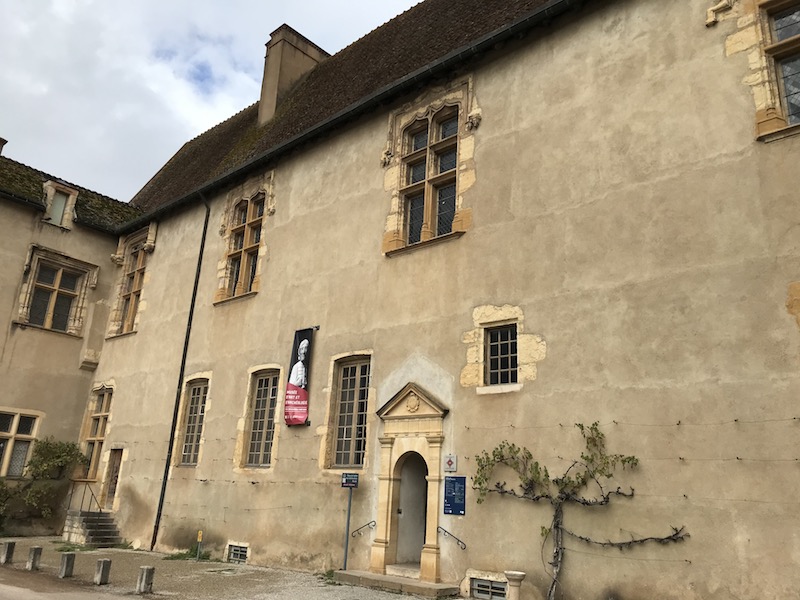

The Porte d'Honneur is the main entrance to the abbey complex. Built around 1100, it is located to the west of the abbey, in the axis of the portals of the narthex and the nave. Here you can see the two large arcades, with decorated columns, fluted pilasters, and Corinthian capitals carved during the years 1120-1130. Once you enter through these gates, you head down a set of stairs and into the abbey complex itself.

